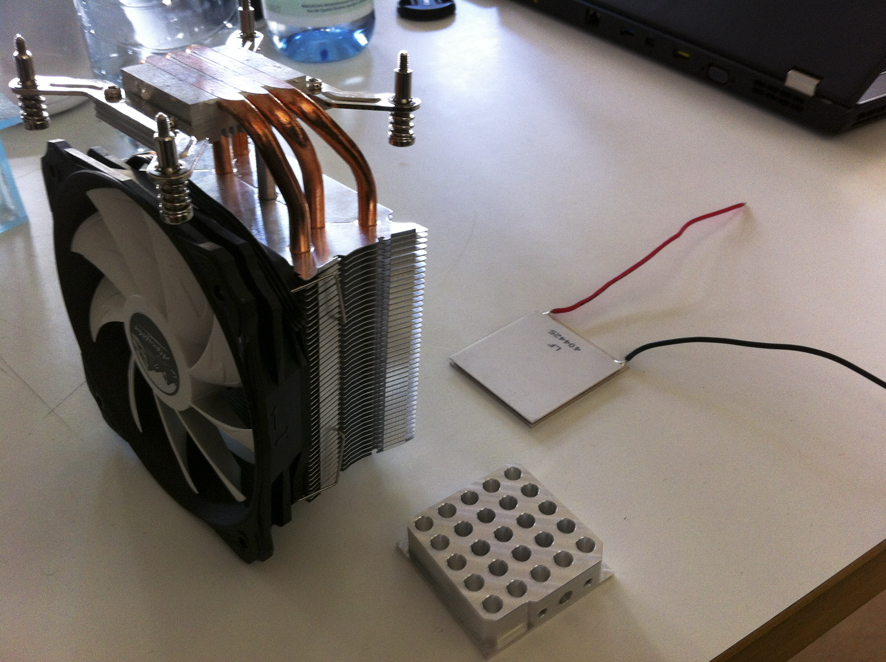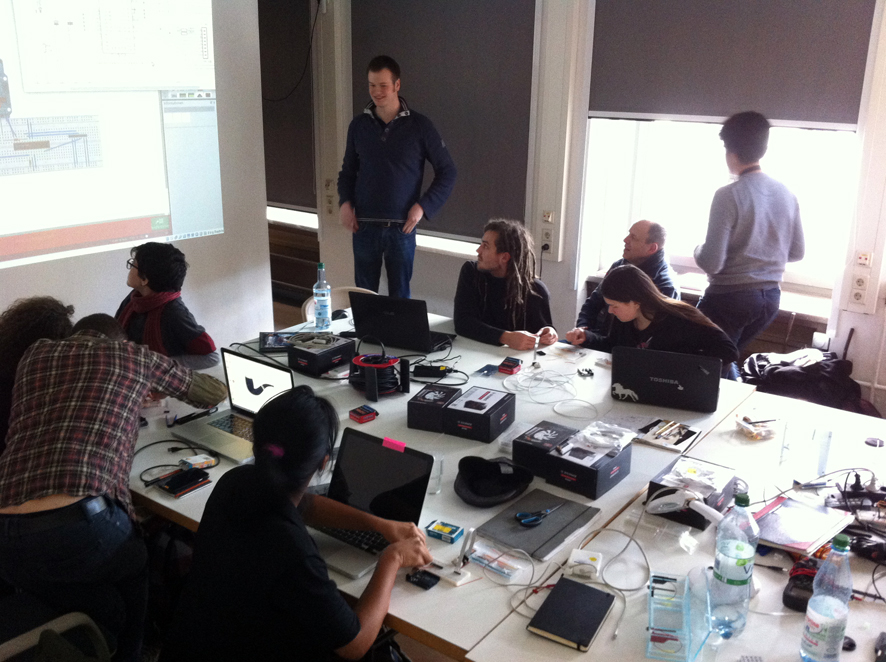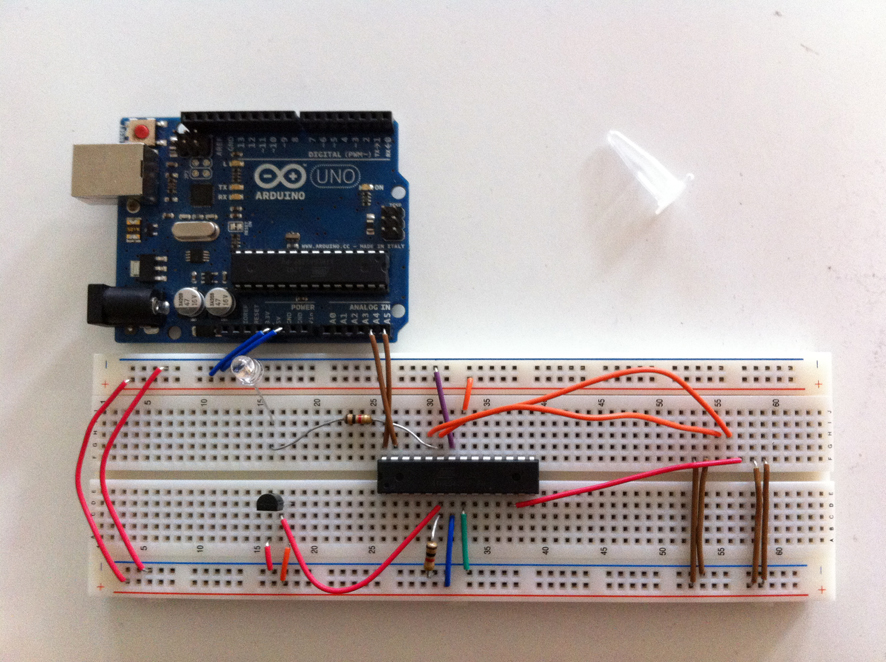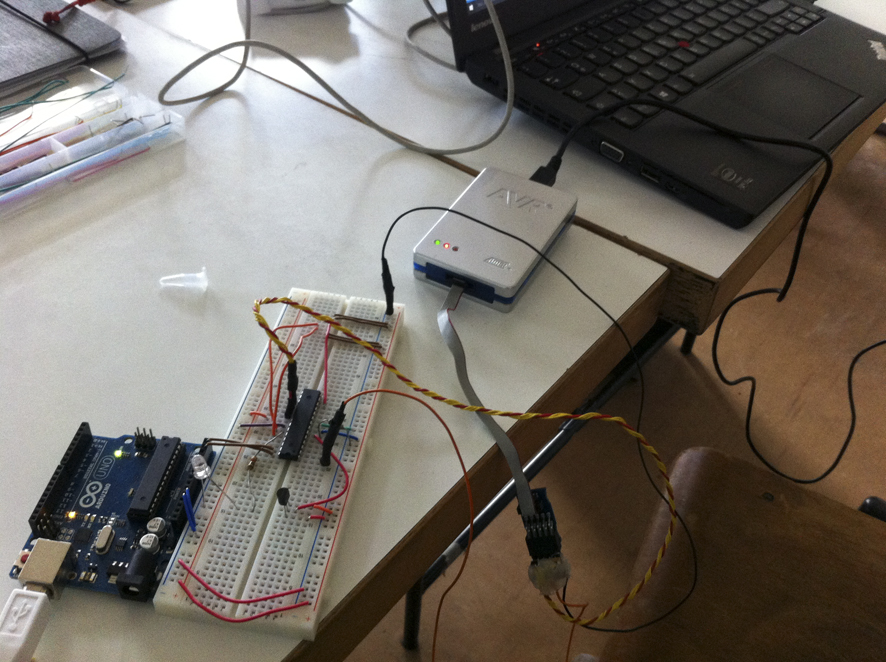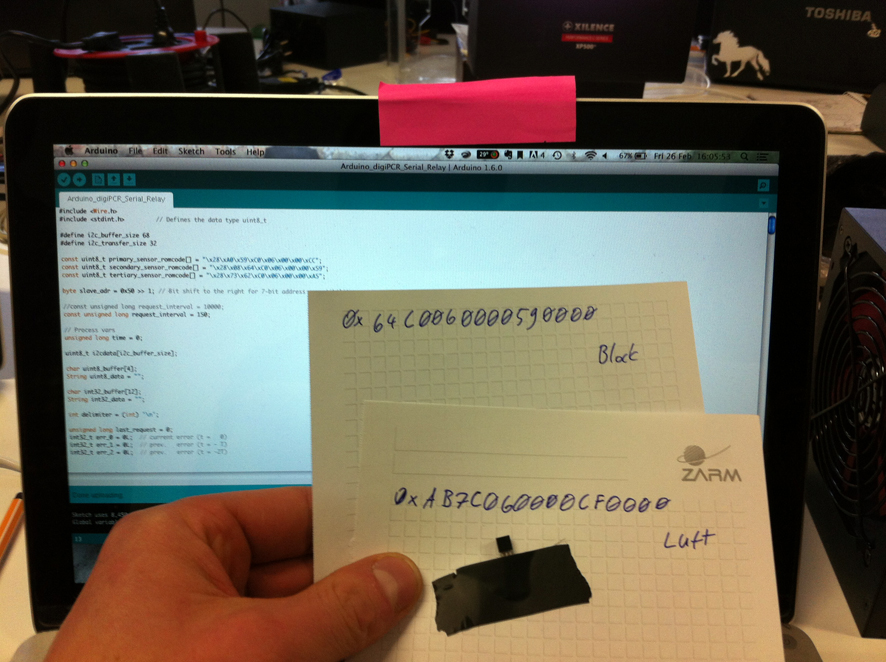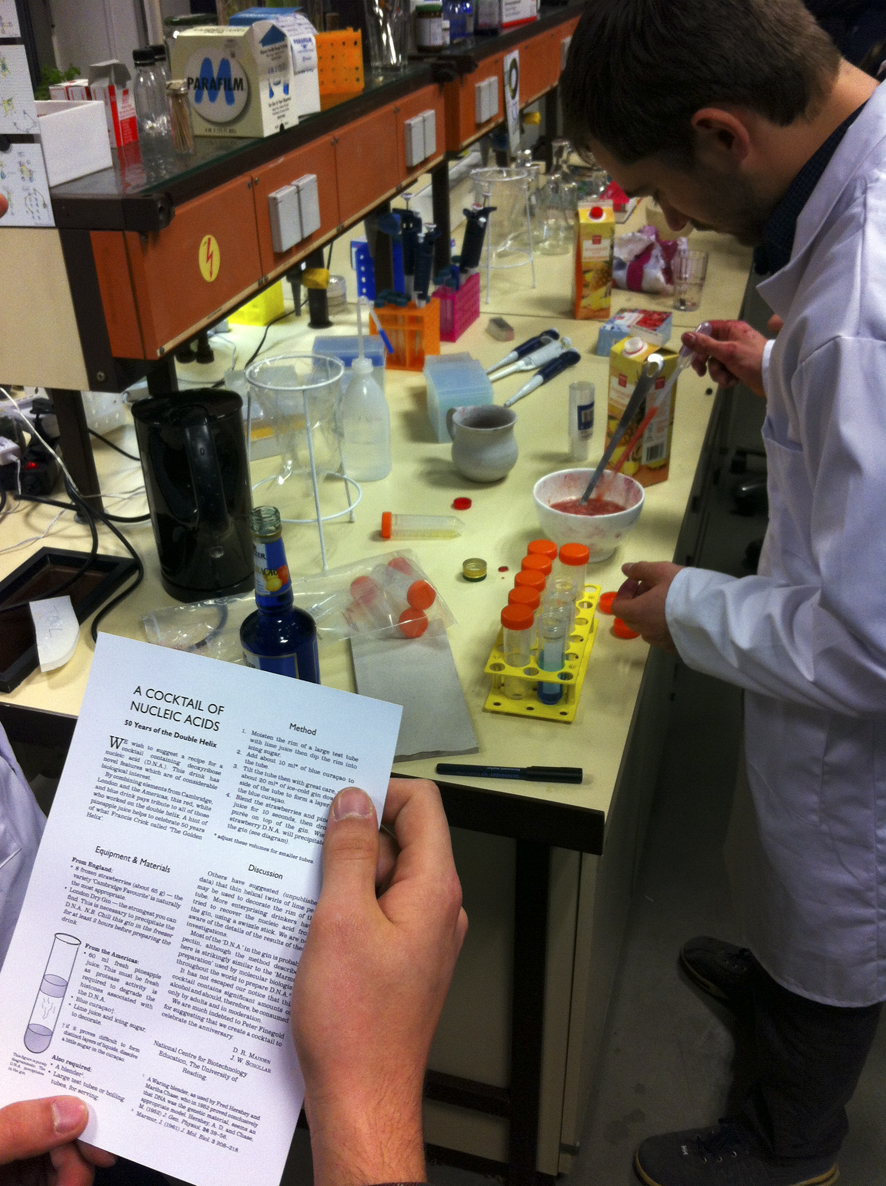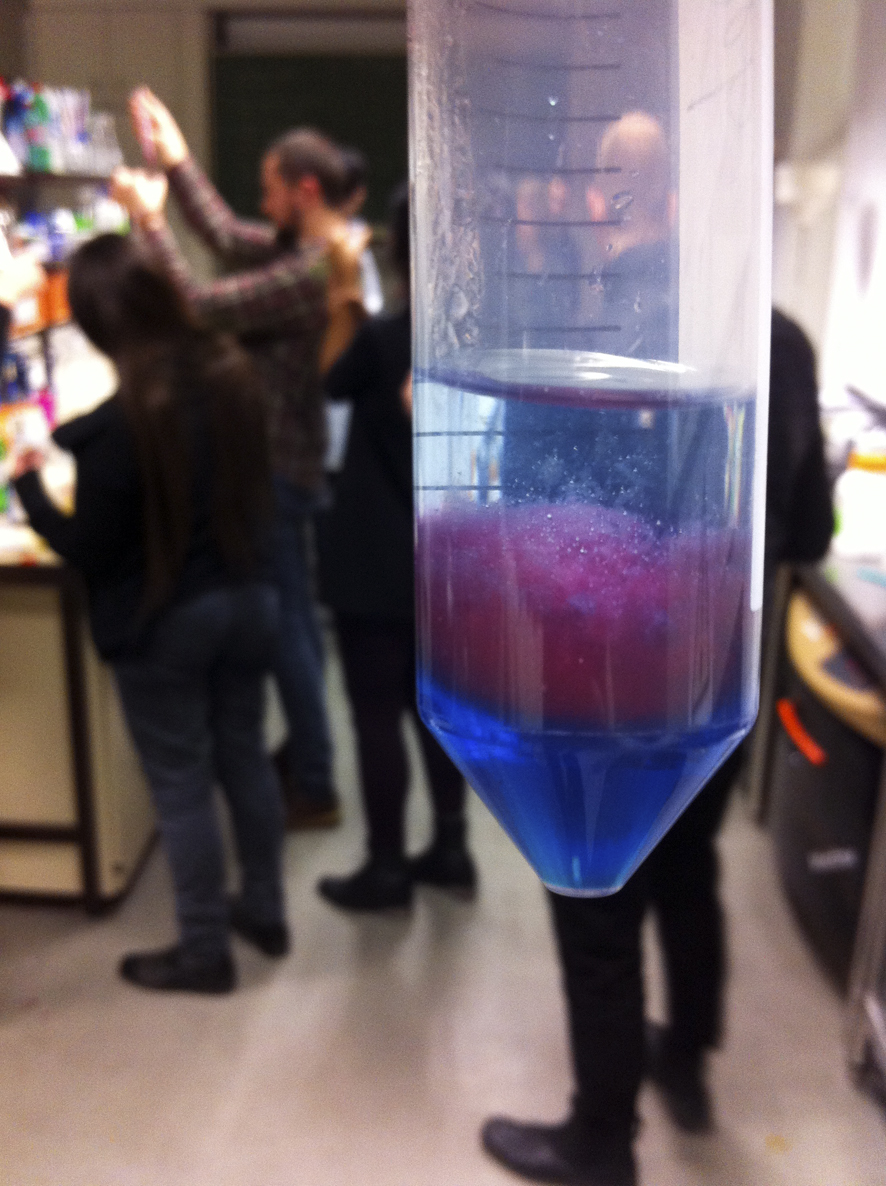Mycelium Presentation (coming soon)
Mycelium growth (coming soon)
D I Y DNA
PCR Workshop with Philip Bayer from the Heidelberg Life science Lab (25th - 28th Feb) 2016
Hands on Citizen Science, exploration of homemade alternative devices. DIY BioTech.
The team from Heidelberg spent four days with us (students from Media art and Media Architecture) to build three PRC Machines, based on their prototype for introducing and teaching PCR.
These are the essential components for building this PCR Machine. A cooling element (the large fan). A heating Element, and a custom built metallic part as the holder for the DNA samples to be Amplified.
Before building the machine, we were first educated on what is a PCR and the related microbiological concepts.
"The polymerase chain reaction (PCR) is a technology in molecular biology used to amplify a single copy or a few copies of a piece of DNA across several orders of magnitude, generating thousands to millions of copies of a particular DNA sequence. Developed in 1983 by Kary Mullis, PCR is now a common and often indispensable technique used in medical and biological research labs for a variety of applications. " - wikipedia
With the help of a heat-stable DNA polymerase, (in this case) Taq polymerase (an enzyme originally isolated from the bacterium Thermus aquaticus), and other microbiological tools, the PRC allows you to replicate and copy specific sections of DNA code (thanks to Primers).
Once the polymerase and Primers (through the PCR Cycles) have amplified the original DNA sample, one can then analyse this using ' agarose gel electrophoresis', a DNA analysis method.
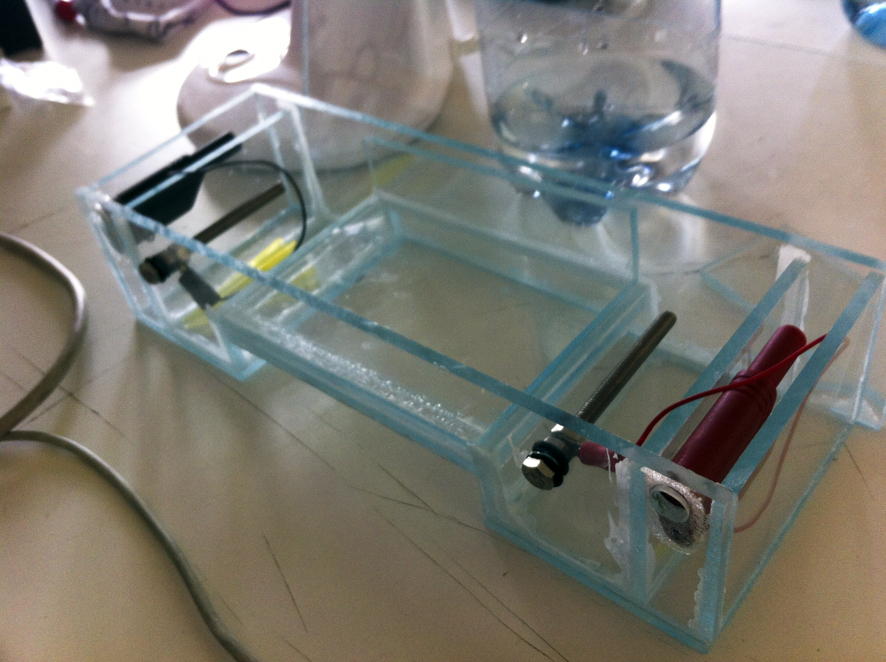 Above: The teams own self build Gel chamber. We later construct one from a lunch box.
Above: The teams own self build Gel chamber. We later construct one from a lunch box.
Building the Arduino circuit.
Flashing the PIC on the breadboard with their software which runs the thermo cycler.
Updating the unique sensor addresses in the Arduino code.
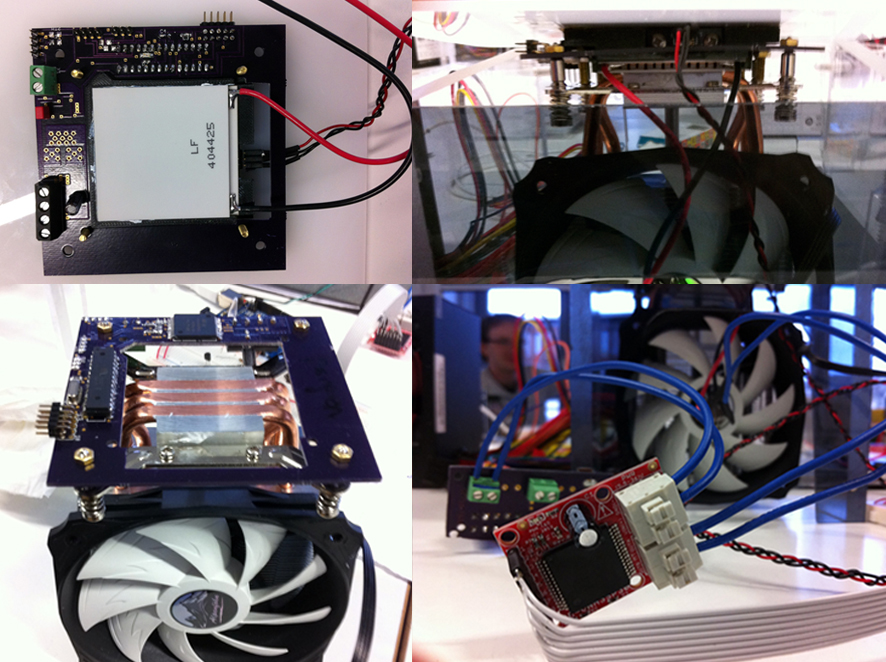 The heating Element is surrounded by the PCB circuit. On this workshop there was an issue with their custom PCB circuit, so that is why we used an Arduino instead. But we still needed to add this part because it was integral to the casing.
The heating Element is surrounded by the PCB circuit. On this workshop there was an issue with their custom PCB circuit, so that is why we used an Arduino instead. But we still needed to add this part because it was integral to the casing.
DNA Seperation Demonstration
With cocktail ingredient Philip Bayer enthusiastically demonstrated how one can separate DNA of Strawberries using ingredient from England and the USA.
(a recipe to celebrate the 50 years of the Double Helix, a collaboration between these two countries, quite fitting!)
